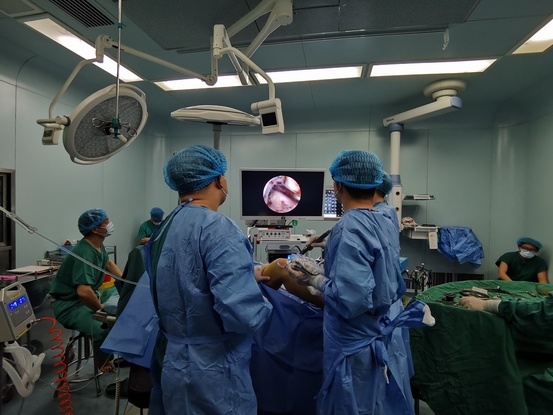The Advancements and Benefits of Arthroscopy Systems in Orthopedic Surgery
Arthroscopy is a minimally invasive surgical procedure that has revolutionized the way orthopedic surgery is performed. It involves the use of an arthroscope, a small camera that allows surgeons to see inside the joint, and various other instruments to diagnose and treat joint-related injuries and disorders. Arthroscopy systems are an essential tool for orthopedic surgeons, providing them with improved accuracy, visualization, and efficiency. In this essay, we will discuss the advancements and benefits of arthroscopy systems in orthopedic surgery.

Arthroscopy systems have evolved significantly over the years. Modern systems have a high-resolution camera, improved lighting, and specialized instruments that allow surgeons to perform intricate procedures with greater precision. The use of digital technology and high-definition monitors has improved the clarity of images, making it easier for surgeons to see and diagnose joint problems. The advancements in arthroscopy systems have improved the accuracy of diagnoses and the effectiveness of treatments.
One of the primary benefits of arthroscopy systems is that they allow for minimally invasive surgery. The small incisions required for the insertion of the arthroscope and instruments minimize tissue damage, resulting in less pain, swelling, and scarring. Minimally invasive surgery also reduces the risk of infection and complications during and after surgery. This leads to a faster recovery time for the patient, enabling them to return to their normal activities quickly.
Another benefit of arthroscopy systems is the improved visualization they provide. The camera and lighting systems in modern arthroscopy systems produce clear and detailed images of the joint, allowing surgeons to see even the smallest structures in the joint. This enhances the accuracy of diagnoses and the effectiveness of treatment.
Arthroscopy systems also improve the efficiency of surgery. The specialized instruments and digital technology in modern systems make procedures faster and more efficient. Surgeons can perform surgeries with greater ease and speed, reducing the time required for surgery and minimizing the strain on the surgeon.
Finally, arthroscopy systems are cost-effective. Because they are minimally invasive, they reduce the cost of hospitalization and the need for follow-up visits. Patients who undergo arthroscopy have a shorter recovery time, enabling them to return to their daily activities and work quickly. This reduces the cost of lost productivity and wages.
In conclusion, arthroscopy systems have transformed the field of orthopedic surgery. They provide improved accuracy, visualization, and efficiency, and are a cost-effective solution for treating joint-related injuries and disorders. The advancements in arthroscopy systems have made minimally invasive surgery possible, reducing the pain, scarring, and recovery time for patients. As technology continues to evolve, we can expect further improvements in arthroscopy systems, making them even more essential for orthopedic surgery.



Leave a message